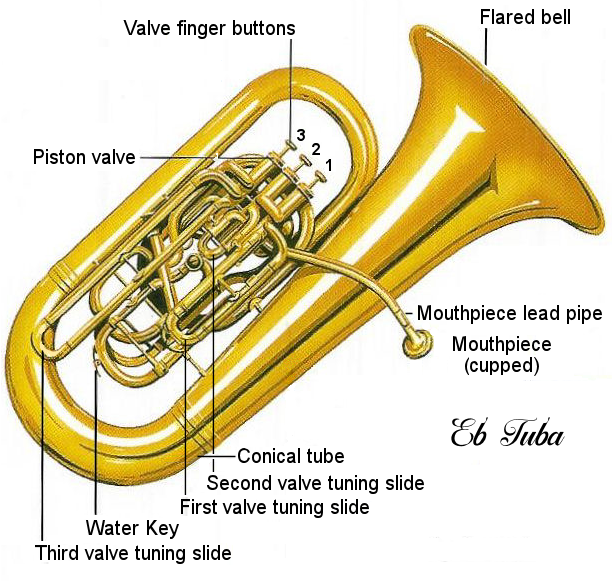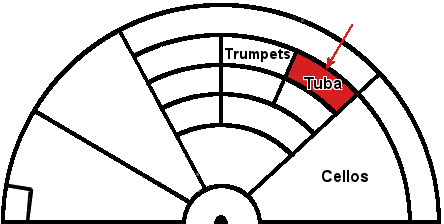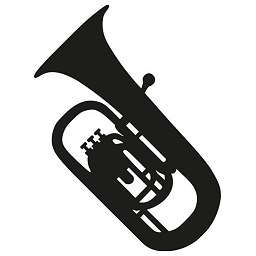The Tuba
The Tuba
The tuba is a member of the family of aerophones, one of the Hornbostel-Sachs classification of instruments which use wind to produce sound through the vibration of blown air.
The tuba is built in both right and a left handed versions.
Diagram of the Tuba

Use of the Tuba
The tuba player performs seated. When standing, he supports the instrument with a neck strap. When seated, the left-handed Tuba leans to the player's right side with the tuba resting on the lap. The player supports the tuba with the right hand gripping the tubing toward the bottom right side of the bell tube or by reaching around the tuba gripping the left side tubing.
The left hand fingers are used to press the valve buttons to reach the different pitches of tones.
When playing, the musician blows air into the mouthpiece while vibrating the lips. Increasing the amount and speed of the air enables higher notes to be reached.
Right-handed tubas are played the same as left-handed tubas but in opposite directions and swapped hands.

Similarly constructed instruments of the tuba family are the tuba, Wagner tuba, sousaphone, and the 'C' or contra-bass tuba. See the different types of tubas in the Brass Section.


Where in the Orchestra?
The Tubas are seated centrally toward the rear of the orchestra, right of the trumpets and left of the cellos. Typically two tubas or sousaphones are used.
Noteworthy Tuba Players

Gerard Hoffnung

John William Barber

William Bell

Roger Bobo


